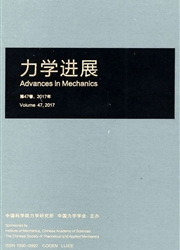

 中文摘要:
中文摘要:
首先从涡脱落生成理论出发对钝体尾流控制方法进行了分类,并简单介绍了国内尾流控制研究情况.之后介绍了我们用窄条或小方柱取代小网柱后,对Strykowsky和Sreenivasan控制方法的改进及其在高雷诺数下对网柱和方柱尾流涡脱落的有效抑制情况,并探讨了控制件钝度对抑制效果的影响.第3部分用实验数据对各个涡脱落生成模型做了分析与检验,指出控制件方法的机理与改变钝体分离位置、减小钝体背压吸力、改变流动的腱向相关性、防止钝体两侧剪切层相互作用等无关,而与钝体近尾流速度剖面的局部修正及其稳定性的改变有关.最后简单介绍,控制件方法今后研究工作展望及其工程应用前景.
 英文摘要:
英文摘要:
In the first section, we classify the control methods of vortex shedding in bluff body wakes according to the control ideas that originate from the theoretical models of vortex generation, and then briefly introduce the recent works of the control in china. In the second section, we present our work on a modified Strykowski & Sreenivasan's method, in which the circular control element is replaced by an element of strip or square cross-section. The result shows an improvement on suppression of vortex shedding from a circular cylinder and from a square cylinder at high Reynolds number flow. The influence of the degree of control element's bluffness on the suppression is investigated. In the third section, the theoretical models of vortex generation are analyzed and examined by using experimental data. We conclude that the mechanism of the element control is not related to the change of separation position or to the reduction of base suction, or to the change of span-wise correlation of the flow, or to the prevention of interactions between the separated shear layers, but is related to the local modifications of the velocity profiles downstream the bluff body and the change in their instability nature. In the final section, we discuss the future study of the control element method and the prospects for engineering applications.
 同期刊论文项目
同期刊论文项目
 同项目期刊论文
同项目期刊论文
 期刊信息
期刊信息
